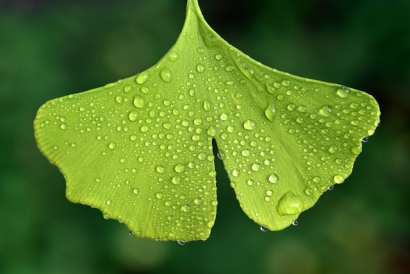
How much energy could we acquire by doing what plants do best?
Photosynthesis is the process by which plants take in water, sunlight and carbon dioxide to produce sugar and oxygen. Artificial photosynthesis seeks to produce hydrogen, electricity or alcohol-based fuel. This energy could be immediately stored away for future use.
The ability to transform sunlight into fuel as efficiently as plants do — or better — would revolutionize the energy sector. That’s because as useful as solar panels are, they're only 15%-20% efficient on average. Scientists have developed some panels approaching 50% efficiency, but this is far from the norm.
Plus, photovoltaics still isn’t as efficient as photosynthesis, which captures and stores about 60% of received solar energy in the form of usable fuel. Some scientists even think an 80% target is possible. Given that artificial photosynthesis could potentially quadruple the amount of energy we could harvest, it’s no wonder that scientists have been researching the topic since the 1970s.
There are many postulated ways to achieve artificial photosynthesis. They are a form of biomimicry, in which scientists take inspiration from nature to design a product or process. Everyone is turning to plants to understand what makes them so efficient so they can achieve photosynthesis in the lab.
One idea is to create an artificial leaf that takes in light and splits water molecules into hydrogen. The end product would be hydrogen, which is rarely found in its pure elemental form in nature, that could be used as energy. For example, hydrogen-powered ships, buildings and cars could use the fuel.
In 2011, scientists created an artificial leaf about the size of a playing card that could split water into hydrogen and oxygen. It wasn’t efficient enough to be mass-produced, but it offered a sign of hope in the burgeoning field of artificial photosynthesis. All current artificial leaf technologies rely on pressurized carbon dioxide. The challenge lies in drawing CO2 from the ambient air.
Another idea for artificial photosynthesis is the tarp model. A tarp coated with solar cells could be placed on a flat surface to take in sunlight and water. Technicians could then put it in a tank full of chemical catalysts to turn carbon dioxide into fuel.
Scientists have built rudimentary artificial photosynthesis systems in the past, but the technology needs to be more sophisticated to justify the cost. That’s how most scientific advancements work — it can take decades of speculation and experimentation before creating something viable.
Simultaneously, many people are working on improving solar panels, wind turbines and other renewables to generate more energy. This shouldn’t be seen as competition for the field of artificial photosynthesis. Efforts to reduce climate change take many forms, and every innovation helps.
For example, many countries are now creating floating solar farms on lakes and water treatment plants, maximizing the ability to capture sunlight and hydropower. Biodigesters, which are large tanks full of bacteria-containing fluid, are turning household food waste into methane for cooking in Africa. Several countries even plan to send solar panels into space to constantly absorb sunlight.
Regardless of the form it takes, renewable energy is here to stay. Fossil fuels are in limited supply and contributing to climate change, and the world is ready for alternative power sources. Artificial photosynthesis could earn its place among them. It simply needs to put down roots.

